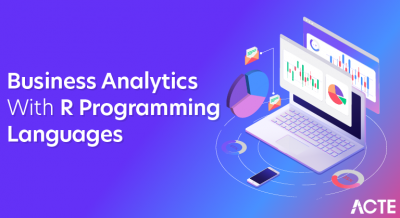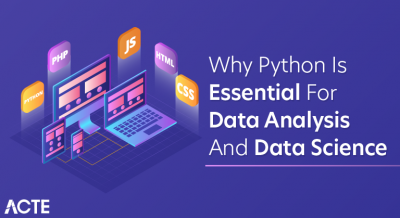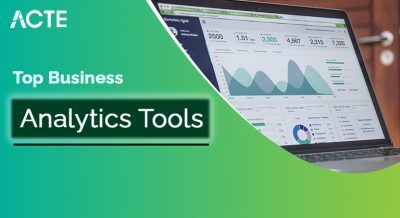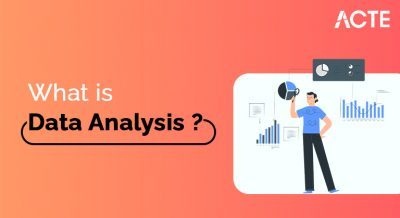
- Introduction
- What is SAS Analytics?
- The Importance of Data-Driven Decision Making
- Key Features of SAS Analytics
- Benefits of SAS Analytics for Decision Making
- Real-World Applications of SAS Analytics
- Challenges in Implementing SAS Analytics
- Conclusion
Introduction
Organizations increasingly depend on data to inform business strategies, discover trends, and make data-driven decisions in the current data-driven age. Data-driven decision-making is no longer a luxury but a necessity for businesses that seek to remain competitive and succeed in today’s landscape. Nevertheless, handling and analyzing massive amounts of data can be daunting without the appropriate tools. That is where SAS Analytics steps in. SAS (Statistical Analysis System) is a strong set of analytics solutions that empowers companies with the capabilities to leverage the power of data. For professionals looking to develop these skills, Business Analyst Training can provide the foundation needed to work with tools like SAS effectively. SAS Analytics enables companies to interpret their data, gain insight, and make improved decisions in many business areas, from marketing and finance to operations and customer service. This blog will delve into why SAS Analytics is critical to data-driven decision-making, its features, advantages, real-life applications, and the pitfalls companies might encounter.
What is SAS Analytics?
SAS Analytics is a comprehensive software suite that integrates various analytical techniques, such as advanced analytics, statistical analysis, predictive analytics, data management, and data visualization. With over four decades of development, SAS has evolved into a leading platform for business analytics, offering solutions across various industries, including healthcare, finance, retail, and manufacturing. At its core, SAS Analytics enables businesses to collect, process, analyze, and visualize large data sets in a way that leads to actionable insights. It is used to uncover hidden patterns, forecast future trends, and ultimately make data-driven decisions that drive growth, efficiency, and profitability. For those exploring a future in analytics, understanding the Business Analyst Career Path can provide valuable direction for how SAS tools fit into long-term professional goals. SAS offers a variety of products that cater to different aspects of analytics, including SAS Viya, SAS Visual Analytics, SAS Forecasting, SAS Data Management, and more. These tools allow businesses to process data quickly, model complex problems, and communicate results effectively.
Become a Business Analyst by enrolling in this Business Analyst Online Course today.
The Importance of Data-Driven Decision Making
In the past, business decisions were often based on intuition, experience, and anecdotal evidence. While these approaches are valuable, they are less reliable in today’s data-driven world. With the explosion of data from social media, e-commerce, IoT devices, and more, organizations now have access to vast amounts of information that can inform every aspect of their operations. Data-driven decision-making guides strategic and operational decisions rather than relying on gut feeling or assumptions. It enables businesses to gain actionable insights and optimize performance. If you’re interested in learning more about how to leverage data in decision-making, Business Analyst Training can equip you with the skills to make data-driven choices effectively.
- Increase accuracy: By using data and analytics, decisions are based on facts, not guesswork.
- Identify opportunities: Analytics help uncover trends, patterns, and insights that may not be immediately obvious.
- Improve efficiency: Automating data analysis can speed up decision-making and responsiveness.
- Enhance competitiveness: Organizations that use data to drive decisions can gain a competitive edge by being more agile and informed.
With its powerful capabilities, SAS Analytics facilitates data-driven decision-making by helping businesses turn raw data into actionable insights.
Thinking About Earning a Master’s Degree in Business Analyst ? Enroll For Business Intelligence Master Program Training Course Today!
Key Features of SAS Analytics
SAS Analytics stands out due to its robust features covering the entire analytics lifecycle, from data collection and management to advanced statistical analysis and data visualization. Below are some of the key features of SAS Analytics:
4.1. Advanced Analytics and Machine LearningSAS Analytics provides businesses with advanced analytics capabilities, including machine learning algorithms, data mining, and optimization techniques. These tools help companies predict future outcomes, uncover hidden patterns in data, and optimize processes in real-time. Professionals working alongside systems like Informatica ETL developer roles often integrate and prepare data pipelines that support these advanced analytics functions efficiently.
- Machine Learning: SAS supports supervised and unsupervised machine learning algorithms, allowing businesses to automate decision-making and continuously improve their models.+
- Data Mining: Discovering previously unknown relationships in data enables businesses to make more informed decisions and identify untapped opportunities.
- Optimization: Businesses can optimize supply chain management, resource allocation, and product pricing processes.
- Demand Forecasting: Businesses can accurately predict customer demand, helping them optimize inventory and reduce waste.
- Financial Forecasting: Predicting future revenues and expenses allows organizations to make smarter budgeting decisions.
- Customer Behavior Prediction: Understanding customer buying patterns helps companies tailor their marketing and sales strategies. 4.3. Data Management and Data Integration
- Data Cleansing: SAS helps remove inaccuracies and inconsistencies in data, ensuring that analyses are based on reliable information.
- Data Integration: It allows businesses to integrate data from multiple sources, creating a comprehensive view of the organization’s operations.
- Data Governance: SAS provides tools for ensuring data is handled securely and complies with regulations. 4.4. Visual Analytics and Data Visualization
- Customizable Dashboards: Users can create dashboards that reflect key performance indicators (KPIs) relevant to their role or department.
- Interactive Reports: Decision-makers can interact with reports to drill down into specific data points and gain deeper insights.
- Data Storytelling: SAS allows businesses to present their data in a compelling, narrative-driven format, making it easier to communicate insights to stakeholders. 4.5. Real-Time Analytics
- Operational Efficiency: Real-time data allows businesses to make decisions that impact day-to-day operations, improving efficiency and reducing delays.
- Customer Experience: By analyzing customer interactions in real-time, businesses can offer immediate support, improve personalization, and enhance the customer experience.
Preparing for YourBusiness Analyst Interview? Check Out Our Blog on Business Analyst Interview Questions & Answer
4.2. Predictive Analytics and ForecastingPredictive analytics helps organizations anticipate future trends based on historical data. By leveraging SAS’s powerful forecasting tools, businesses can create models that predict demand, customer behavior, financial performance, and more.
Data management is crucial for ensuring data accuracy, consistency, and accessibility across the organization. SAS Analytics provides tools to manage data from various sources, including databases, cloud platforms, and third-party applications. Understanding roles like a Business Analyst Job Description can help clarify how professionals contribute to managing and leveraging this data effectively within organizations.
SAS’s Visual Analytics feature allows users to create interactive dashboards and reports that make data easy to understand. Visual analytics helps decision-makers quickly grasp insights from complex data sets.
SAS enables businesses to analyze data in real-time, which is critical for making fast, informed decisions. Whether monitoring website traffic, tracking social media sentiment, or analyzing customer transactions, real-time analytics allows companies to react quickly to emerging trends or issues. For those exploring other analytics tools, understanding What is Power BI can offer additional insight into how different platforms support real-time decision-making and business intelligence.

Benefits of SAS Analytics for Decision-Making
The use of SAS Analytics offers several benefits that help organizations improve their decision-making processes:
- Improved Accuracy: Data-driven decisions are based on solid evidence, reducing the risk of errors resulting from intuition or incomplete data.
- Faster Decision Making: SAS automates data analysis and provides real-time insights, allowing businesses to make quicker decisions and increase their agility.
- Deeper Insights: Advanced analytics and machine learning capabilities allow businesses to uncover previously hidden insights in their data.
- Scalability: SAS Analytics can handle large volumes of data and is scalable, meaning businesses can grow their analytics capabilities as needed.
- Cost Savings: Businesses can reduce costs and improve profitability by optimizing processes, forecasting more accurately, and identifying inefficiencies.
Real-World Applications of SAS Analytics
SAS Analytics has a broad range of applications across various industries, enabling organizations to make data-driven decisions and optimize operations. In the healthcare sector, SAS is used to predict patient outcomes, improve hospital efficiency, and personalize treatment plans through advanced data analysis. Financial institutions, including banks and insurance companies, rely on SAS for fraud detection, credit scoring, and effective risk management. In the retail industry, it helps forecast demand, manage inventory, enhance customer experiences, and streamline supply chains. Manufacturers benefit from SAS through predictive maintenance, quality control, and process optimization. Additionally, marketers leverage SAS to analyze customer behavior, segment audiences, and develop personalized campaigns that boost engagement and loyalty. Tools like Best Big Data Visualization Tools complement SAS by helping present insights in a more intuitive and impactful way, making data easier to understand and act upon.
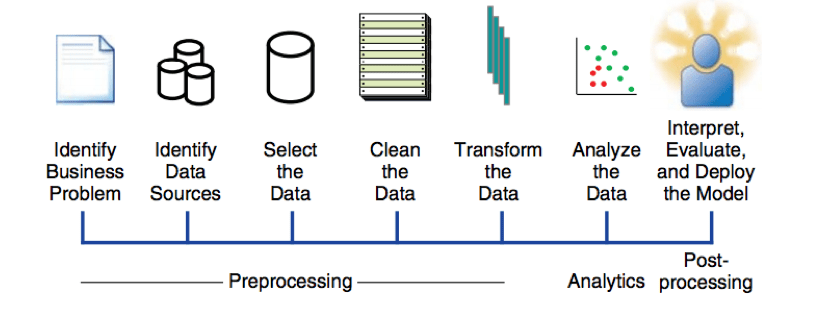
Challenges in Implementing SAS Analytics
Despite its powerful capabilities, implementing SAS Analytics comes with challenges:
- Cost: The initial cost of licensing SAS software can be a barrier for smaller organizations. There may also be additional costs for training and implementation.
- Complexity: SAS Analytics’ full potential can be realized only when organizations have the technical expertise to implement and operate it effectively. Some businesses may need to invest in training or hiring skilled data scientists and analysts.
- Data Quality: Inaccurate or incomplete data can hinder the effectiveness of SAS Analytics. Businesses need to ensure that they have clean, reliable data for analysis.
Conclusion
Maximizing your learning capacity is not a matter of implementing all strategies simultaneously but of discovering what suits you best and being consistent in your method. You can maximize how you learn and retain information using active learning methods such as the Pomodoro Technique, spaced repetition, retrieval practice, and mind mapping. Just as important is staying motivated, leveraging technology to support your experience such as enrolling in Business Analyst Training and overcoming challenges such as procrastination and burnout. Most importantly, embracing a lifelong learning attitude will enable you to develop intellectually and personally well beyond when you’ve attained your short-term learning objectives. Success is not merely about learning more but learning better. By implementing these tactics, you can realize your learning potential and thrive in any aspect of life.


